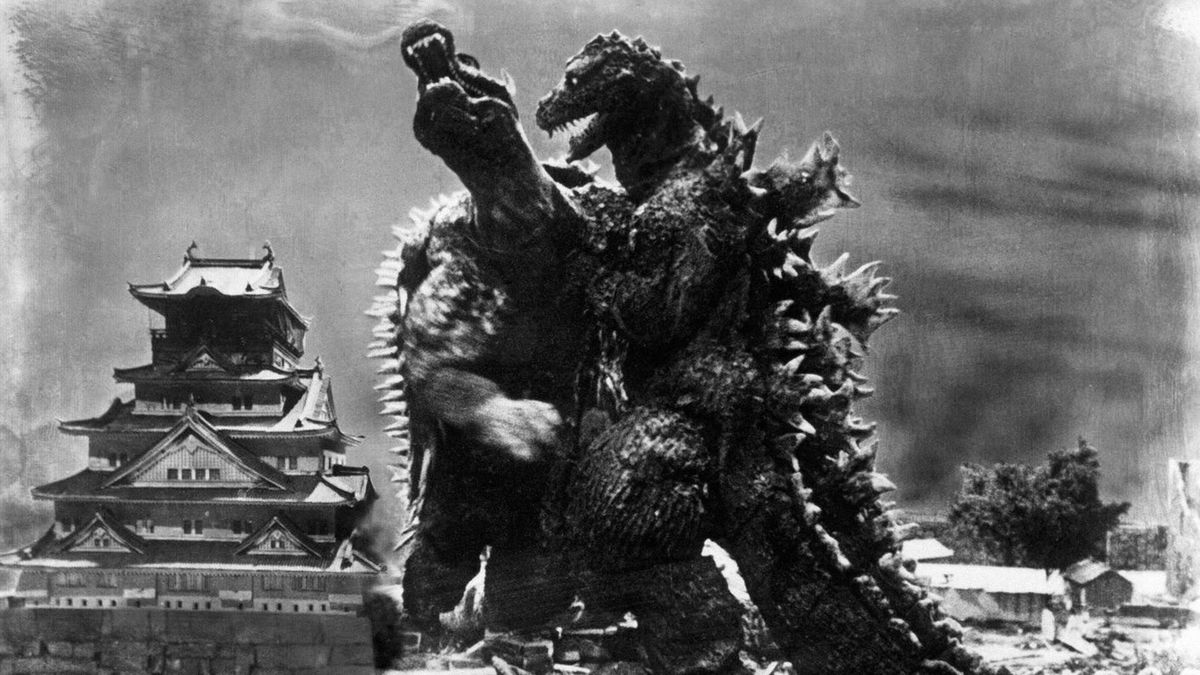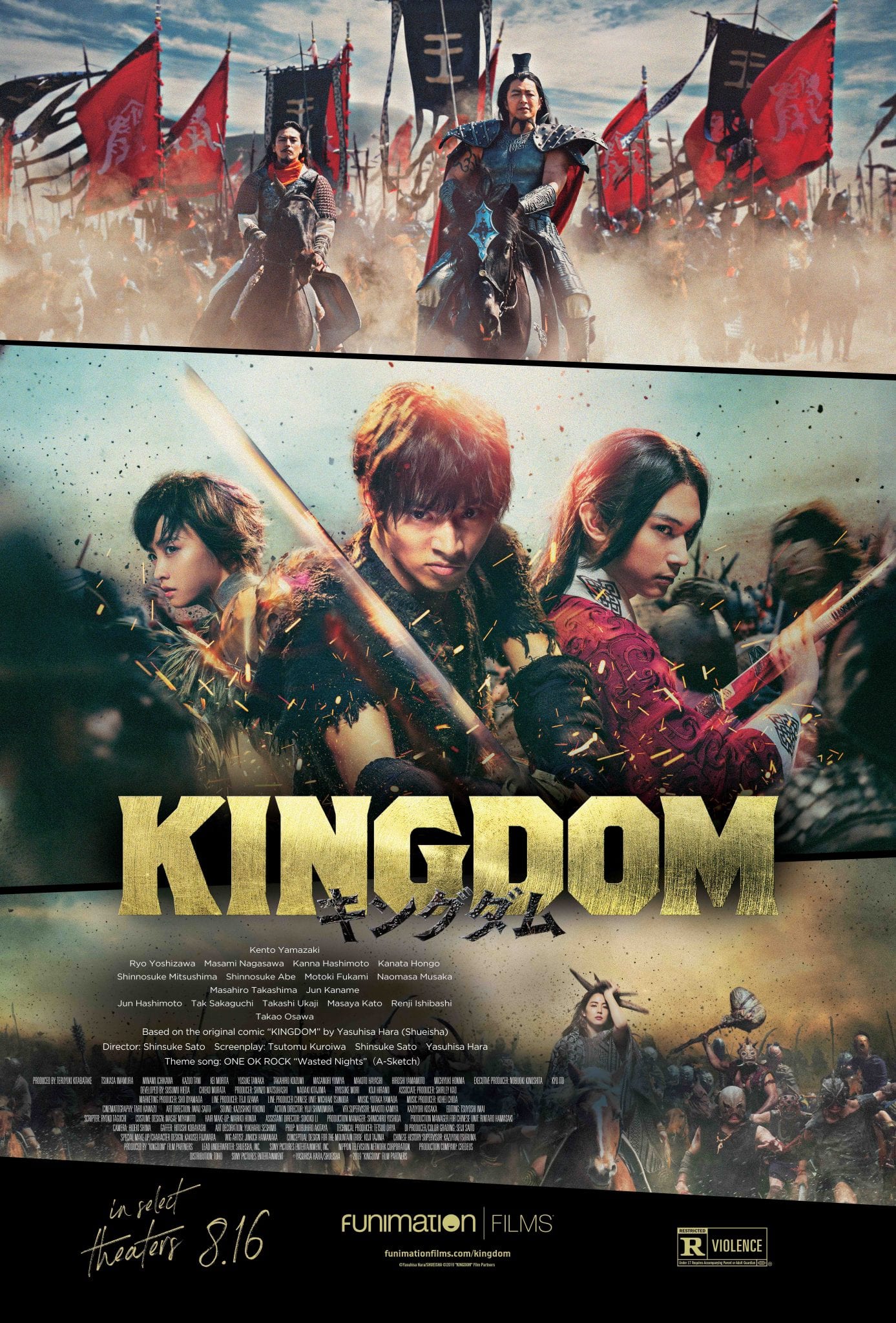By Ben Dower

With the success of?Godzilla, Toho immediately began production on a sequel.??Rather than Tokyo, this time it would be Osaka that would face the wrath of the monsters ? plural.
In Godzilla Raids Again (1955), Shoichi Tsukioka (Hiroshi Koizumi) is a pilot who spots tuna for an Osaka-based cannery until he runs into engine trouble.??He manages to safely land at a nearby island where his co-worker and friend, Koji Kobayashi (Minoru Chiaki,) comes to rescue him.??While they are there, they spot two giant monsters fighting.??The monsters eventually battle off a cliff and plunge into the ocean.
Dr. Kyohei Yamane (Takashi Shimura, reprising his role from the previous film) identifies one of the monsters as a second Godzilla.??At the end of?Godzilla,?he had warned the government that continued nuclear testing could bring about another Godzilla.??The other monster, which has a spiky back and is quadruped, is identified as an Anguirus, a dinosaur in the Ankylosaur family that has probably also been awakened through nuclear tests.
The monsters soon make their way to Osaka and continue their battle, devastating the city. As the monsters square off next to Osaka Castle, Godzilla gains the upper hand. The two monsters plow through the castle and Godzilla bites down on Anguirus? neck, killing him. Godzilla leaves a burning Osaka, the smoke rising up above the city like a mushroom cloud.
With the cannery destroyed, Tsukioka and Kobayashi are transferred to the company?s operation in Hokkaido. While there, they become involved in the hunt for Godzilla.??Godzilla is found at a small, snow-covered island.??Kobayashi?s plane crashes into a mountain on the island, sending an avalanche of ice onto the monster.??The military proceeds to bombard the mountains around Godzilla, burying him in ice.

Godzilla Raids Again was released on April 24, 1955, a little under six months after Godzilla, and the film does feel rushed. While Godzilla was a deep metaphor for nuclear destruction and Japan?s experience of World War II, Godzilla Raids Again largely jettisons that metaphor in favour of a more upbeat and generic monster film.
That said, there are still hints of the themes of the first film sprinkled throughout, like the long shot of Osaka burning where the smoke resembles a mushroom cloud. Osaka is an interesting choice for the monster attack. Like Tokyo, it was heavily bombed during the war. The last air raid by the United States on Osaka took place on August 14, 1945 as part of a 1,000 plane final raid on Japan, an operation that went ahead despite the fact Japan was moving to surrender. Emperor Hirohito announced Japan?s surrender the following day, August 15, 1945.
Also carried over from the first film is the military feel, with planes flying low over the city and dropping flares to try to lure the monsters away. Scenes of civilian evacuations also evoke wartime imagery, and shots of a smouldering Osaka the day after the monsters? attack are reminiscent of Hiroshima and Nagasaki, much like the imagery of a charred Tokyo was in Godzilla.
Like Godzilla, Godzilla Raids Again was quickly purchased for U.S. distribution. There were initially plans to film a whole new American story for the film called The Volcano Monsters. Toho even shipped Anguirus and Godzilla suits to the United States for the American producers to use to create their own monster scenes.
Ultimately, the plans for?The Volcano Monsters?fell through and instead the film was dubbed and heavily edited for its North American release.??George Takei, who later found fame portraying Hikaru Sulu in Star Trek, lent his voical talents for the English dub.??While the plot of the film is largely the same, sound effects were altered, stock footage inserted, and music changed.??The film was also retitled?Gigantis, the Fire Monster. As with?Godzilla, this Americanized cut of the film was the only version released in North America for 50 years. In 2006, both edits of the film were released on a single DVD by Classic Media.??
Currently,?Godzilla Raids Again?(Japanese version only) is available from The Criterion Collection as part of their?Godzilla: The Showa-Era Films, 1954-1975?Blu-ray set featuring the first 15 Godzilla movies.




